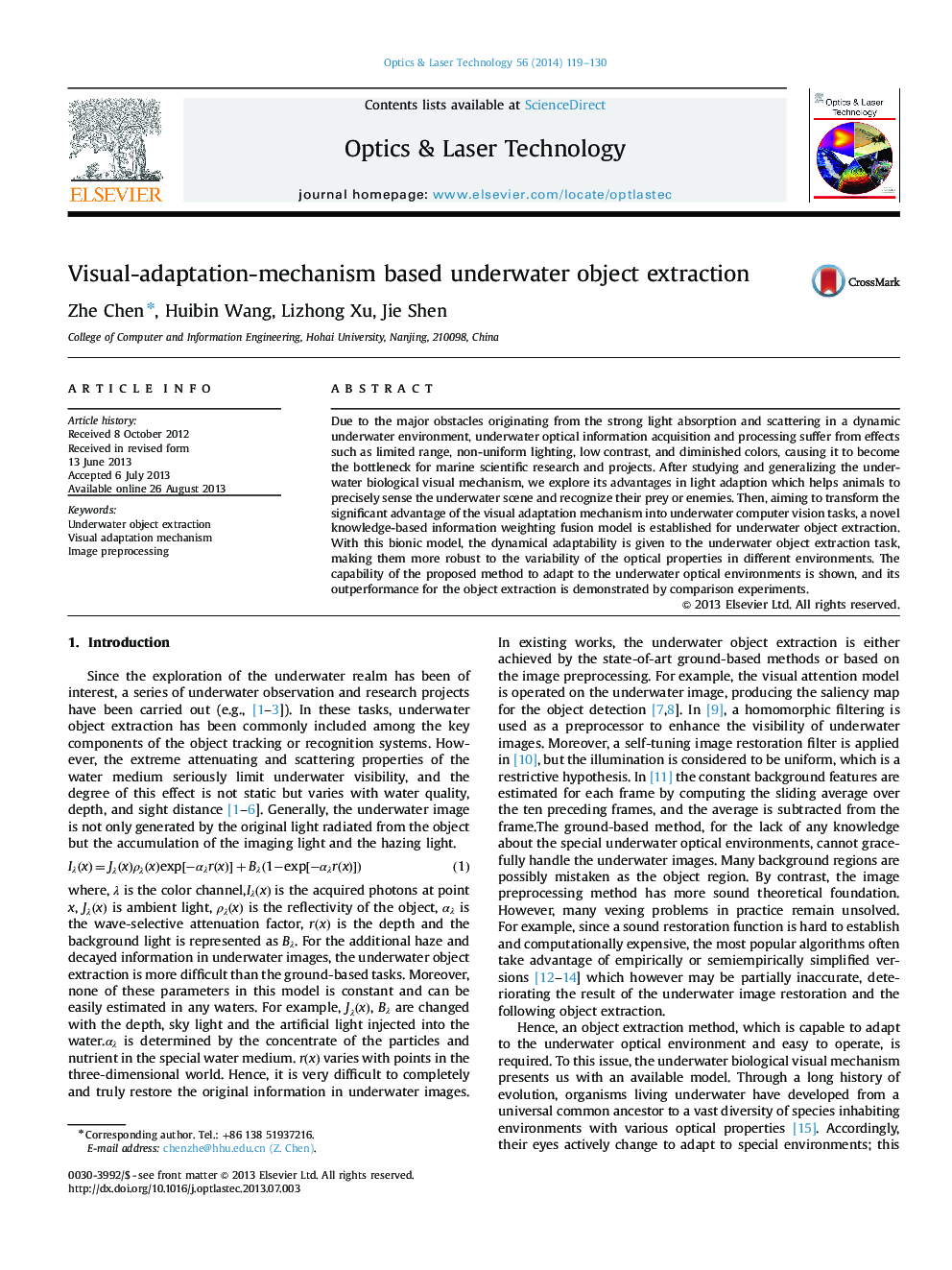| Article ID | Journal | Published Year | Pages | File Type |
|---|---|---|---|---|
| 739375 | Optics & Laser Technology | 2014 | 12 Pages |
●Generalizing the adaptive mechanism underling the acute vision of mantis shrimps.●Establishing a bionic model for adaptive fusing underwater optical information.●Learning the prior optical knowledge by the calibration map based machine learning.●The proposed method is able to adapt to various underwater optical environments.●Directly operating on the raw passive optical image without any preprocessing.
Due to the major obstacles originating from the strong light absorption and scattering in a dynamic underwater environment, underwater optical information acquisition and processing suffer from effects such as limited range, non-uniform lighting, low contrast, and diminished colors, causing it to become the bottleneck for marine scientific research and projects. After studying and generalizing the underwater biological visual mechanism, we explore its advantages in light adaption which helps animals to precisely sense the underwater scene and recognize their prey or enemies. Then, aiming to transform the significant advantage of the visual adaptation mechanism into underwater computer vision tasks, a novel knowledge-based information weighting fusion model is established for underwater object extraction. With this bionic model, the dynamical adaptability is given to the underwater object extraction task, making them more robust to the variability of the optical properties in different environments. The capability of the proposed method to adapt to the underwater optical environments is shown, and its outperformance for the object extraction is demonstrated by comparison experiments.
